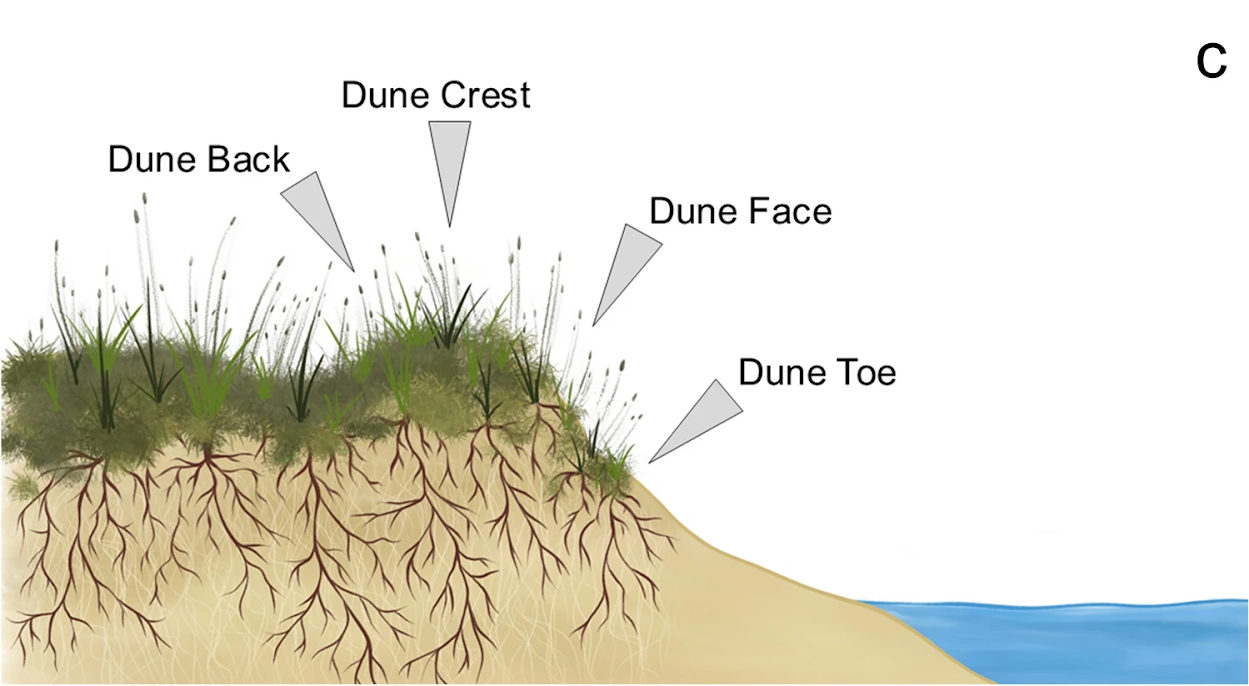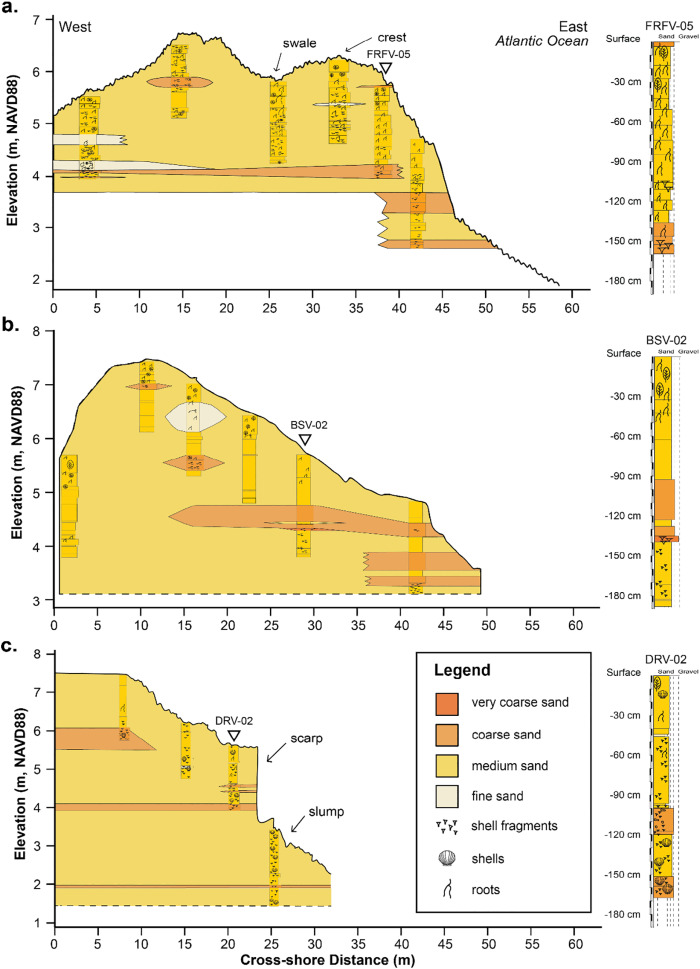
NCCOS-funded research has revealed that natural, managed, and constructed (or man-made) dunes differ in internal structure, and suggest that these dune types may provide different levels of protection to beachfront communities that can be vulnerable to erosion and storm surge. In two recent publications, the research team shares how the make-up of the dunes, such as plant roots and the way the dune formed, may be useful predictors for long-term coastal resilience.
The researchers compared the internal structure of sand dunes across the Outer Banks, North Carolina, to better understand how their histories – whether they built naturally, were fully constructed, or have been carefully managed to optimize growth – influence factors suspected to impact dune erodibility. These factors include number of plant varieties, root mass, sand type, and geological structure. They found that natural dunes have more plant species, root mass, and root depth than artificial dunes, which may provide greater stabilization. Dunes with multiple plant species are also better at trapping sand. The team explained that the varied root shapes and depths of natural dunes likely help anchor them more effectively than artificial ones. Strong plant communities also help recovery after storms by capturing sand and preventing further collapse.
For managed or constructed dunes, the way in which a dune is built or maintained also helps determine how stable it is likely to be in the future. Dunes managed by trapping sand with fences and planted vegetation had greater structural complexity (similar to natural dunes) and were less susceptible to erosion than dunes built by grading sand with heavy machinery. For example, managed dunes were found to contain multiple distinct layers of sand types, which may provide added structural integrity. By comparison, constructed dunes that do not contain as many different sand layers may be more likely to erode and regularly require maintenance.

These findings offer coastal managers options to more efficiently restore, maintain, and monitor existing dunes, as well as to create new ones. Managers could incorporate more species into their planting plans and install sand fencing so that artificial dunes may more closely mimic natural dunes, and therefore might contribute to longer-term resilience. The results also suggested that measuring vegetation cover noninvasively (i.e., using remote sensing options such as LiDAR and satellite imagery) may be sufficient for monitoring the stability of dunes.
The Virginia Commonwealth University and Virginia Institute of Marine Science lead this project, which is funded through the NCCOS Effects of Sea Level Rise (ESLR) Program. Project partners include the US Army Engineer Research and Development Center.
This work is authorized by the NOAA Authorization Act of 1992, Pub. L. 102-567 (Oct. 29, 1992); sec. 201(c), which authorizes appropriation for the NCCOS Competitive Research Program to augment and integrate existing programs of NOAA and shall include efforts to improve predictions of coastal hazards to protect human life and personal property.
Citations:
- Davis, E. H., Hein, C. J., Cohn, N., White, A. E., & Zinnert, J. C. (2024). Differences in internal sedimentologic and biotic structure between natural, managed, and constructed coastal foredunes. Geomorphology, 451, 109083. https://doi.org/10.1016/j.geomorph.2024.109083
- White, A. E., Cohn, N., Davis, E. H., Hein, C. J., & Zinnert, J. C. (2024). Coastal dune management affects above and belowground biotic characteristics. Scientific Reports, 14(1). https://doi.org/10.1038/s41598-024-73312-z
